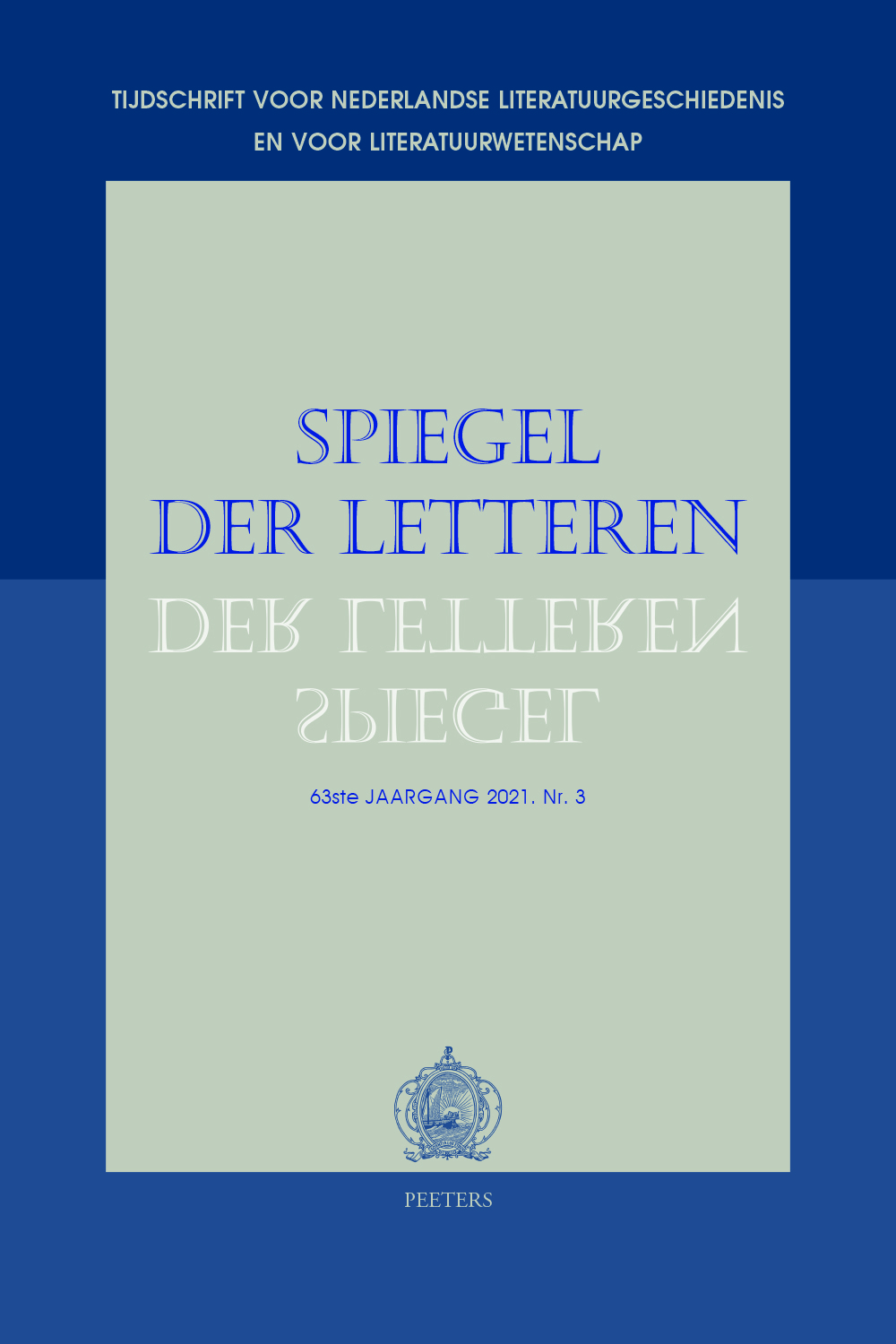 previous article in this issue previous article in this issue | next article in this issue  |

Preview first page |
Document Details : Title: Een schijnheilige intrigant Subtitle: De kastanje als symbool voor seksualiteit in Naar Merelbeke en Het hout Author(s): VAN RIJT, Jimmy , WOLTERS, Bas Journal: Spiegel der Letteren Volume: 59 Issue: 1 Date: 2017 Pages: 87-113 DOI: 10.2143/SDL.59.1.3259731 Abstract : Naar Merelbeke (1994) by Stefan Hertmans and Het hout (2014) by Jeroen Brouwers can both be characterized as novels covering sexual taboos: in Naar Merelbeke, the nascent sexuality of a young Flemish adolescent in the 1950’s and 1960’s is covered, while Het hout treats sexual abuse in a catholic environment. At the same time, the chestnut (tree) seems to play an important role in the (description of) sexual development of main characters in these Dutch novels. The relationship between sexual development and the chestnut (tree) is explored by analyzing the novels in a close reading style based on four narratological dimensions. Based on this analysis, it is argued that the chestnut should be treated as a symbol for addressing sexuality and sexual taboo in the above-mentioned novels, manifesting itself by means of metaphor and metonymy in various ways. |
|


